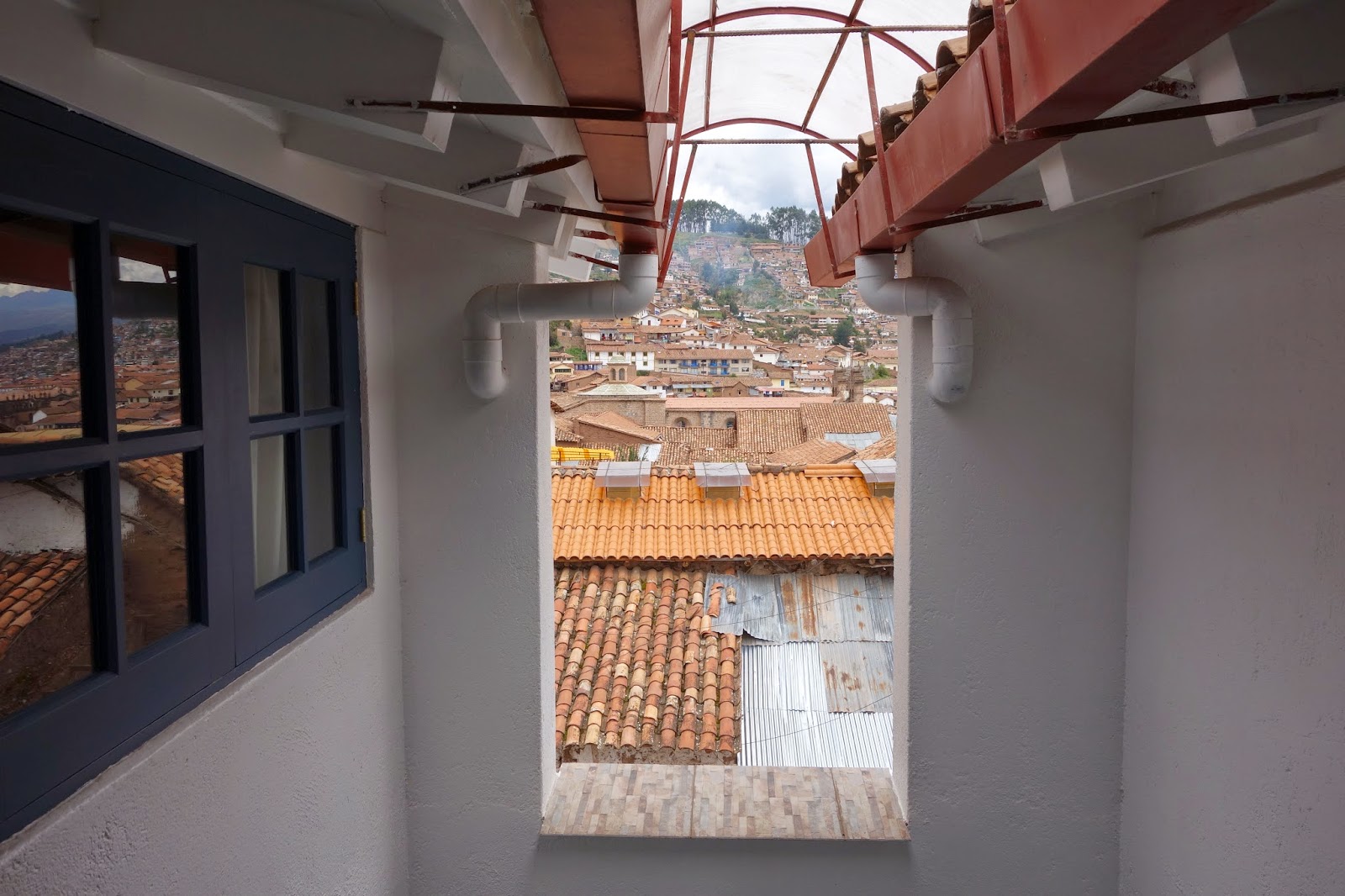With the weather a sweltering 90 degrees in most of the US, I'm longing for another trip to Peru to visit its cooler climes. But it's not just for the weather. A visit to Machu Picchu, Cusco and Lima offers a wonderful foodie and adventure getaway even for a long weekend, thanks to new service provided on JetBlue from Fort Lauderdale to Lima.
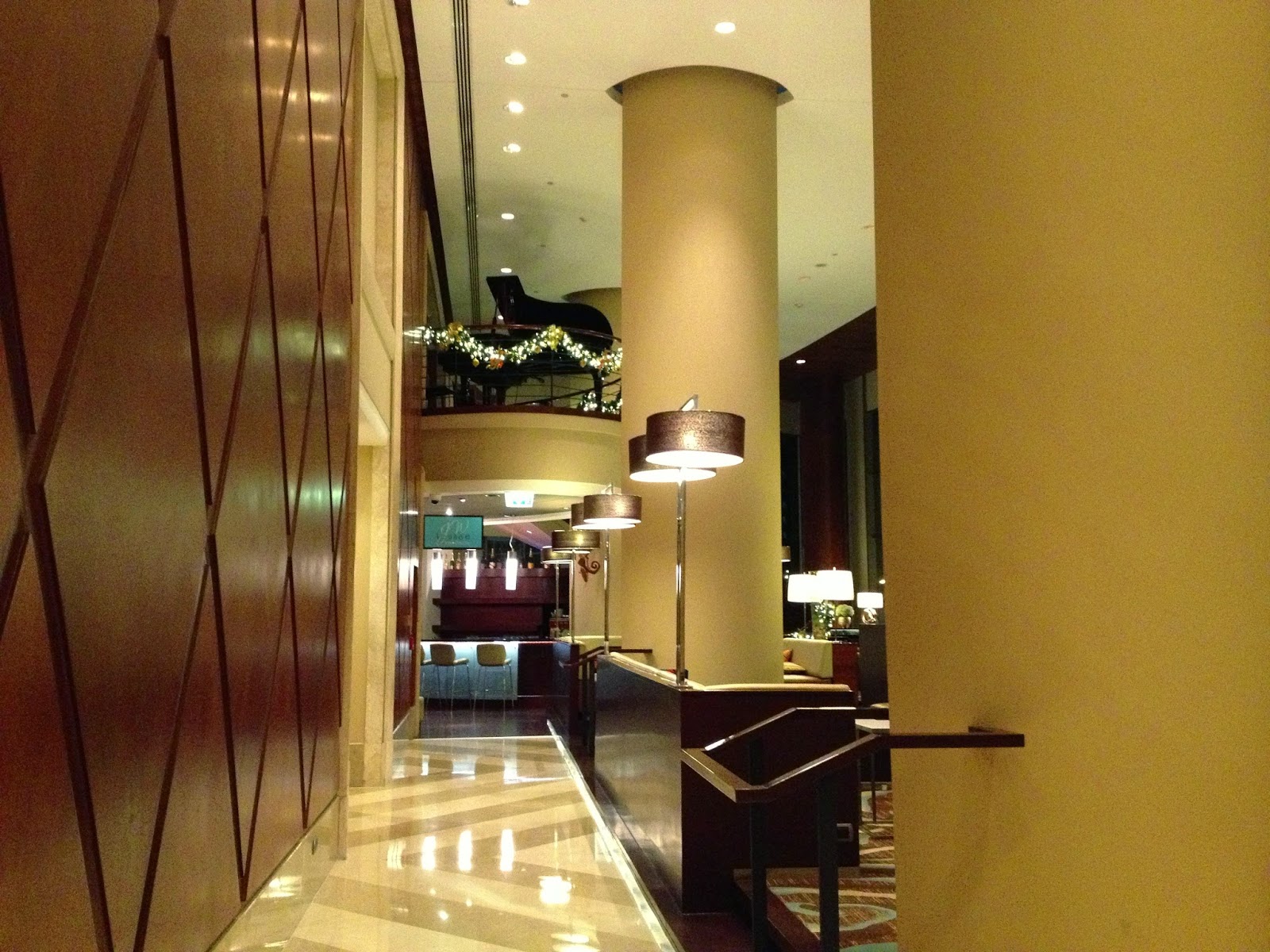 |
| JW Marriott Lima |
I chose to visit this "bucket list" area for four days, starting my trip in the Miraflores district of Lima. A great stopover en route to Machu Picchu, Lima is one of the upcoming foodie destinations in South America with chefs like Virgilio Martinez and Gaston Acurio and restaurants that are consistently named among the best in the world.
 |
| Fruit ceviche at Central |
 |
| Central |
I stayed at the contemporary JW Marriott Hotel Lima, overlooking the Pacific Ocean. The hotel was near one of the finest restaurants in Peru, the Central Restaurante. With its airy design and open kitchen, the restaurant defined cutting-edge gastronomy and orientation. Chef Virgilio Martinez, as charming as he is passionate about the biodiversity of foods in Peru, made a point of explaining his philosophy of integrating foods along a vertical plane: specifically including products from the varying altitudes of the country. The menu that evening included ingredients from the sea (seaweed calamari on coral), the coast (native corn), the Andes (tuber chamomile), and the Amazon (spicy roots). Gorgeous plating of charred purple corn-scented octopus, served with lentils, botija olives, sprouts and tree tomato; and beef short rib that had been soaked for 24 hours in water left me wanting more.
 |
| Cusco |
From Lima, the flight to Cusco on LAN was a snap, significantly shorter than the one from Fort Lauderdale to Lima, although not as luxe. My hotel in an old market building was cool and trendy, with a gracious mix of thoughtful amenities and comfort. Views over city rooftops were striking, and the location was an easy walk to the city's outdoor markets, Cathedral, and even a Starbucks. Further afoot and requiring a car, glorious views from the ancient Sacsayhuamam sanctuary and its pre-Incan Killke ruins showed off the entire valley with jaw-dropping angles.
Cusco, known as "the belly of the world," has much to see in the way of history and mysticism. Officially named a World Heritage site in 1983, Cusco was the historic capital of the Inca Empire from the fourteenth to sixteenth centuries. The richness of this culture pervades the city, its religious icons and its ruins to this day.
 |
| Cusco Cathedral |
The food market, daily arts and crafts marketplace, and The Plaza de Armas offered a solid dose of history and culture. Each was filled with the colors and beauty of Peru, particularly the gold-filled Cusco Cathedral. El Museo del Pisco provided a different kind of history and more exploration motivation with tastings of Peru's national drink, a brandy made in the coastal desert plains of the country. Sample pisco straight up, in cocktails, in a flight, and served with appropriate tapas in this multi-floor temple to the beverage.
 |
| El Museo del Pisco, Cusco |
Two restaurants gave me the dining experiences I was looking for, a mix of tradition torqued forward through multicultural influences: the Mediterranean-oriented Cicciolina and Peruvian-fusion Limo .
 |
| Alpaca skewers, Limo |
 |
| McDonald's, Cusco |
In the Plaza de Armas, I encountered, in amusing juxtaposition, KFC, McDonald's and the fabulously creative Limo, all three enjoying wonderful views of the flower-filled plaza and each with a Peruvian style of its own. Limo, a standout for ceviches, tiraditos, and various sushi fantasies, uses Peruvian ingredients highly prized by chefs around the world, such as pink salt, aji (chili pepper), and huacatay (black mint). You'll also find Peruvian favorites like alpaca steak skewers that pair remarkably well with an aji seco, a chili-infused drink from Limo's extensive Pisco menu, or chicha morada, a sweetish drink made from purple corn. A wall of windows let you watch the comings of goings of the city while you enjoyed your meal and drinks from the pisco bar.
 |
| Alpaca carpaccio, Cicciolina |
 |
| Scallops, Cicciolina |
 |
| Pisco coca, Limo |
 |
| Cicciolina |
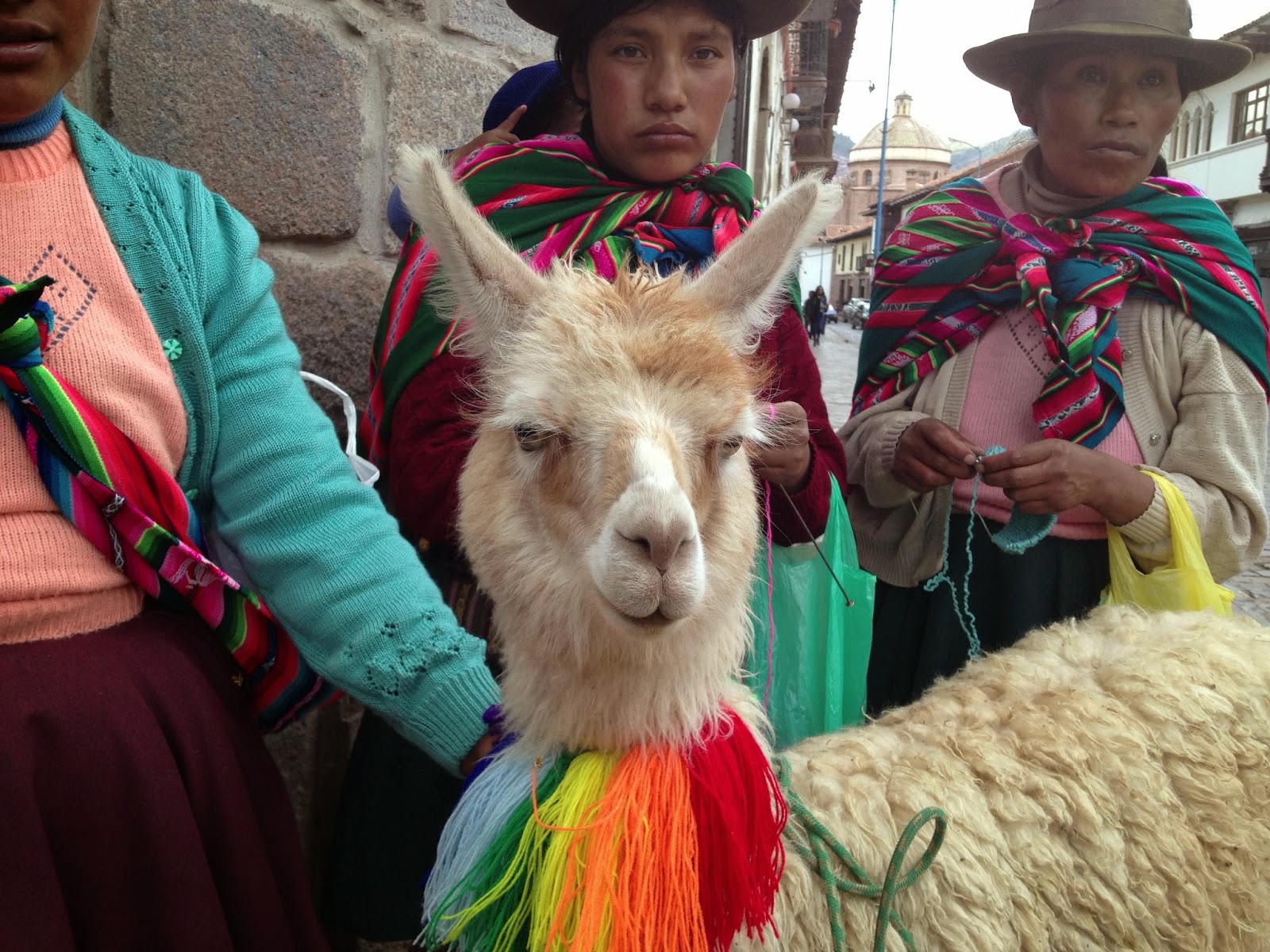
Set in the second floor of an old colonial house, Cicciolina presented an array of traditional Peruvian dishes tapas-style, including guinea pig (cuy), alpaca and ceviche. Cicciolina's cuy is presented "causa style," set atop a fine yellow potato mash with chilies and caramelized apple. Alpaca carpaccio is a gorgeous spread of thin slices with huacatay oil, goat cheese and cherry tomatoes. I also loved the Peruvian scallops barbecued and topped with crispy garlic and lime. Heartier Mediterranean fare was also composed creatively with vegetables and herbs from the Sacred Valley. It was easy to stay and savor in this friendly, art-filled restaurant, as colorful and creative as the galleries below.
 |
| Plaza de Armas |
 |
| Marengo |
A fitting contrast to these finer dining venues, a restaurant frequented by locals satisfied a late-night craving for the Peruvian version of pizza. Served on thick crust, dripping with cheese and other toppings, the pies at Marengo Pizzeria and the cheery servers fostered a fun evening of beer, pizza and camaraderie. I especially loved the giant meat-centric Marengo, topped with bacon, ham, and sausage.
 |
| El Mercado Tunqui |
 |
| Mate |
My base in Cusco, El Mercado Tunqui Hotel, is a member of Mountain Lodges of Peru, a group of hotels known for their location and fostering of trekking itineraries. El Mercado is a short walk up a hill from the marketplace and Plaza de Armas, and is set in a building formerly used as the city's old farmer's market. With a beautiful open-air courtyard, quirky art installations throughout, and expansive windows that bring the views of the hills and greenery inside, the 32-room boutique hotel provided every comfort you could want: a cushy bed, a thoughtfully appointed bathroom, a tablet for your use, and a quiet respite from the outdoor activity. The bar, for a traditional Pisco Sour or a Mate de Coca (to help acclimatize to the altitude), and the Taberna restaurantwere also welcome spots when my feet gave out from climbing up and down the hills or touring the sites.
 |
| Vistadome |
Cusco is the jumping off point for a visit to Machu Picchu. Unless you're determined to hike the Inca Trail (an aruduous four-day trek that requires a bit of planning), I strongly suggest taking one of the panoramic trains which parallels it. With a glass ceiling, broad windows on both sides, food and beverage service, masked musicians, and even a fashion show of alpaca sweaters, shawls, and scarves, the train trip was both entertaining and beautiful. The Vistadome train (www.perurail.com) leaves from Poroy, just 20 minutes from Cusco.
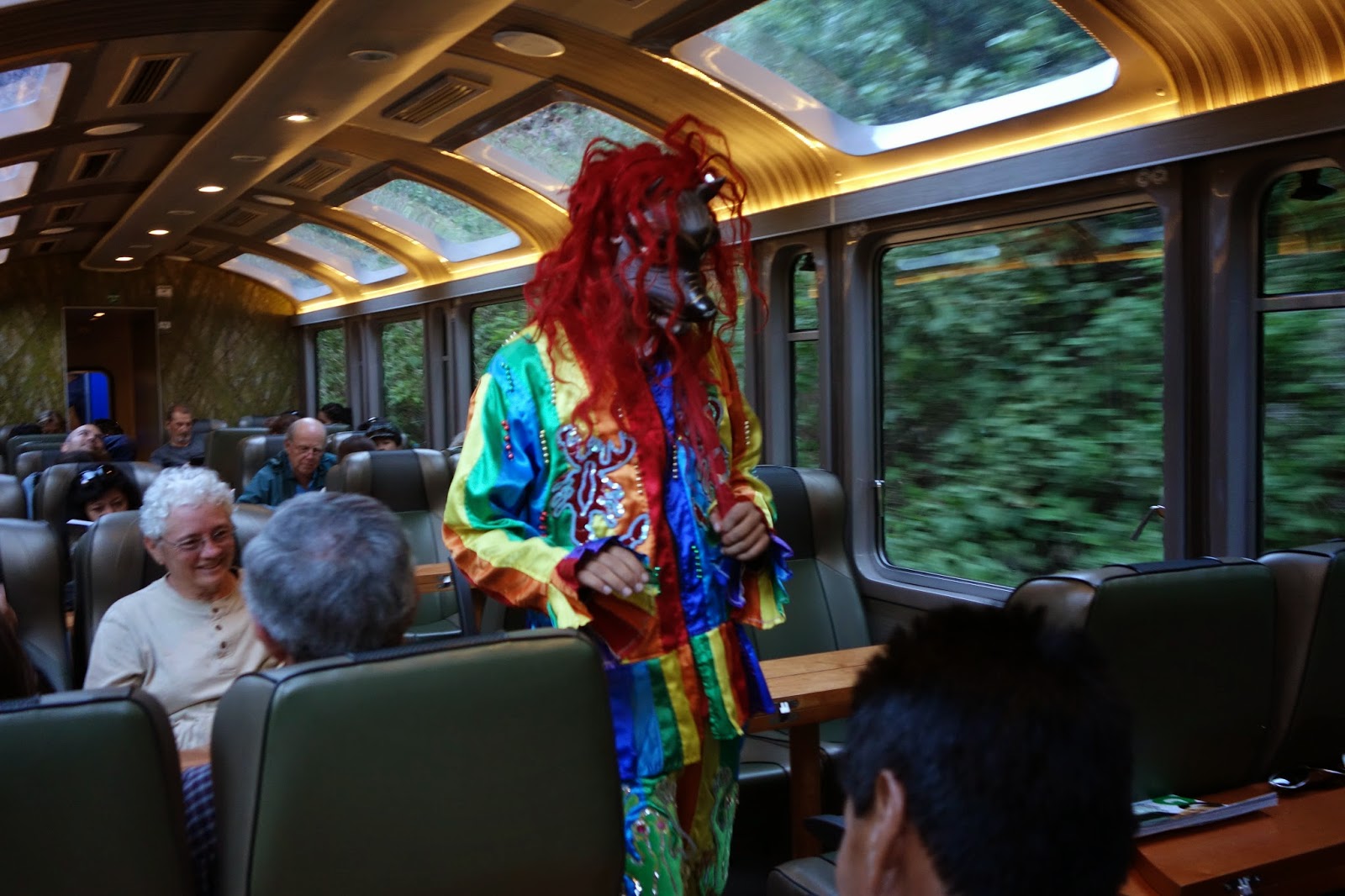
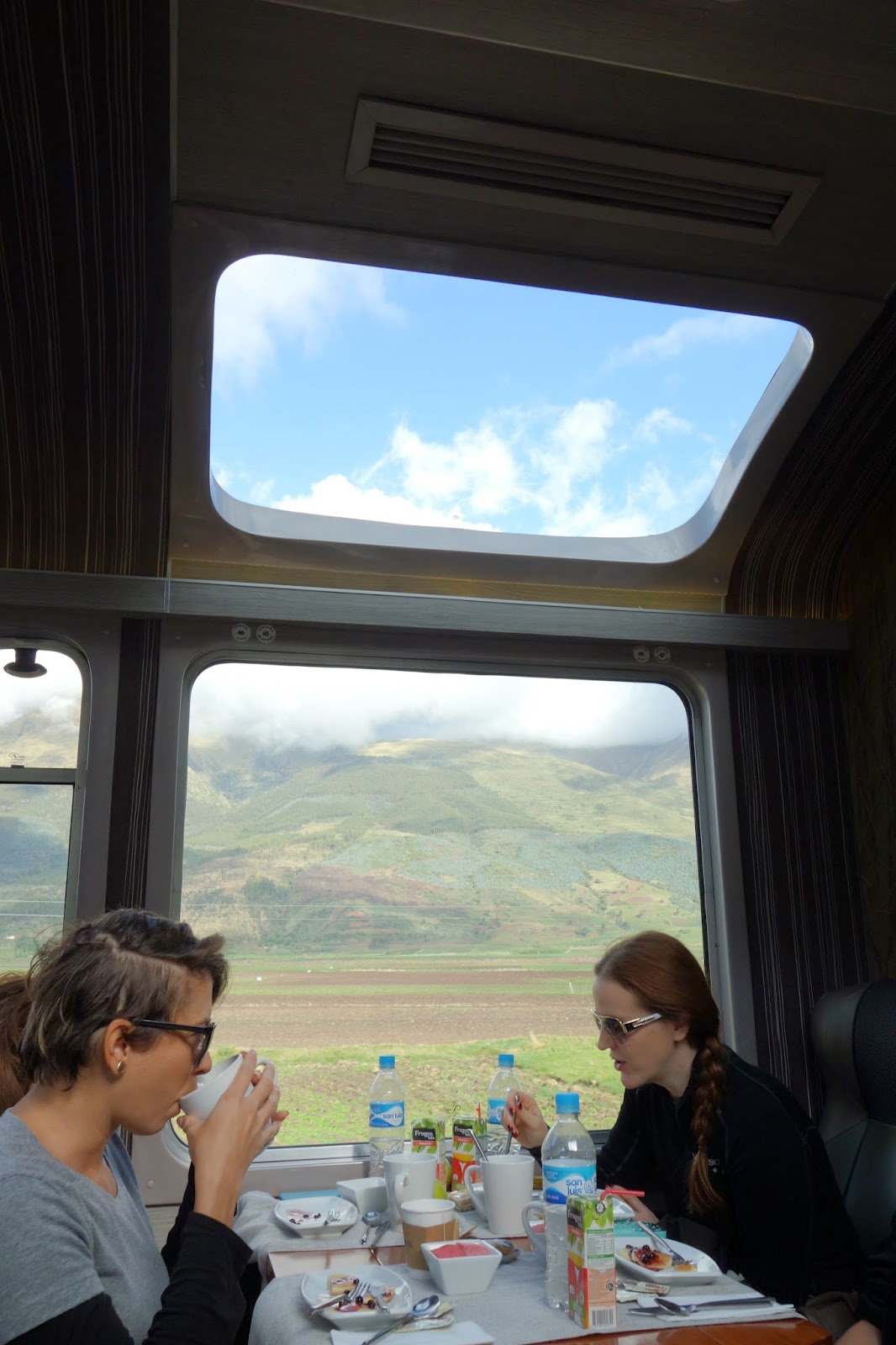
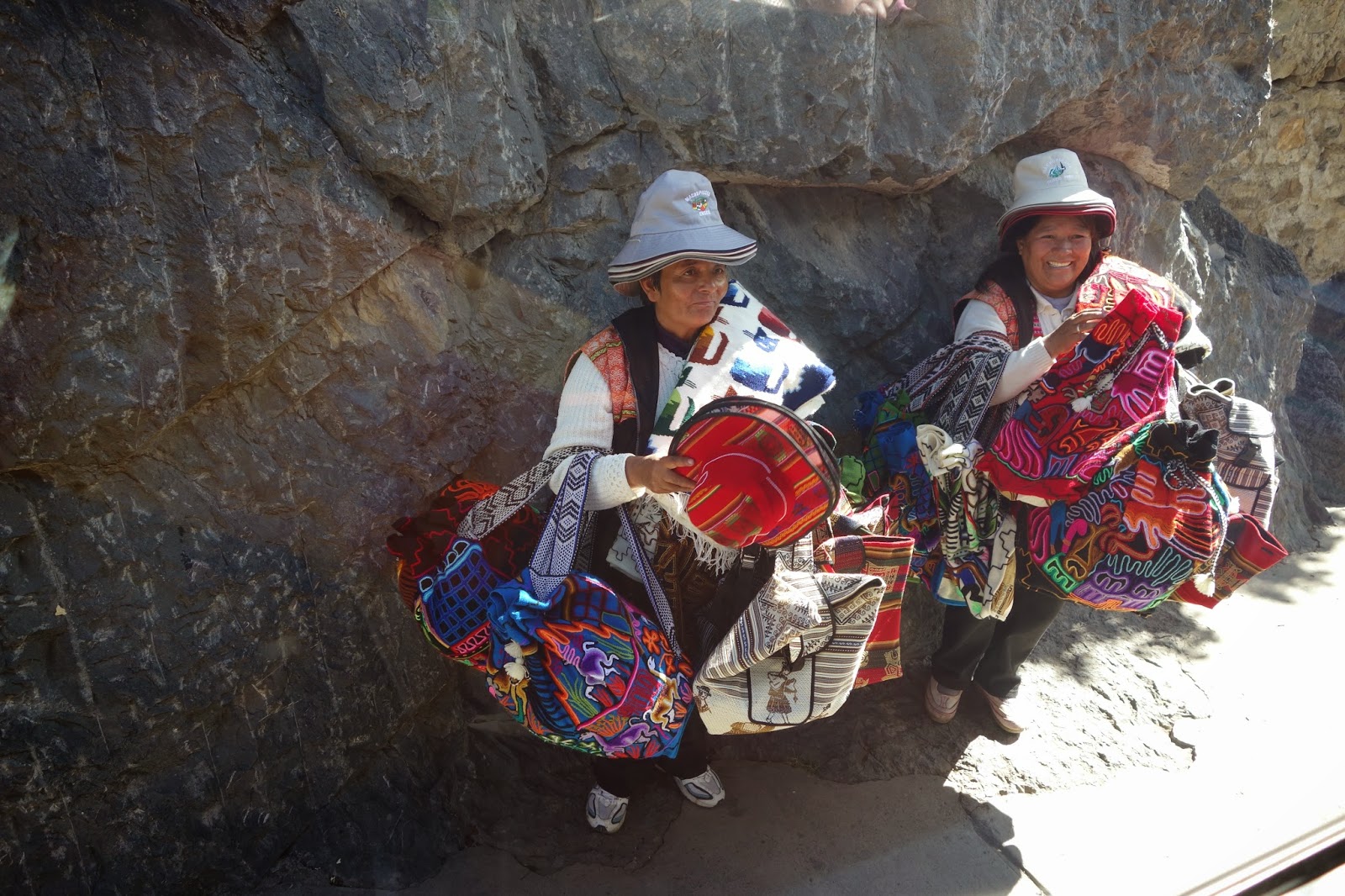

Arriving in Aguas Calientes, the destination city for visiting Machu Picchu, is an adventure itself. The sheer number of daily visitors makes for a chaotic scene, as you transfer by way of the Indian Market to a shuttle bus that takes you to the entrance to Machu Picchu. By the way, if you're afraid of winding hilly roads, this may be the time to invest in a good eye mask for your ride in what is essentially an old school bus.
Although it's possible to stay in a hotel in Aguas Calientes, I would recommend returning to Cusco to unwind in a quieter environment and enjoy an evening of great food and drink.(I didn't have time on this visit, but I would have added two other restaurants to my foodie pilgrimages: MAP Cafe and Gaston Acurio's Chicha.)
 |
| Meryl at Machu PIcchu |
I had always wanted to visit Machu Picchu. I love the mystery of ruins and the cultures they conjure up. When I visited Rapa Nui (Easter Island) seven years ago, the island's 800 or more Moai grabbed my attention in a major way, particularly since no one could definitively explain why and how they were there, and what they represented. With Machu Picchu, we have more information to go on. Or at least more theories that make sense. The Incans built their astronomic-religious city high atop a peak in the Andes in the fifteenth century but vacated after the arrival of Spanish conquistadors in the 1500s. Discovered by American historian Hiram Bingham in 1911, most of the artifacts from Machu Picchu were seized and moved to Yale University for preservation and study. (They have since been returned to Peru.) The most significant and tangible legacy of the Inca civilization, this "Lost City of the Incas" was named a World Heritage property in 1983, with reconstruction continuing in present times. The view of the Citadel is one of the most recognizable in the world.
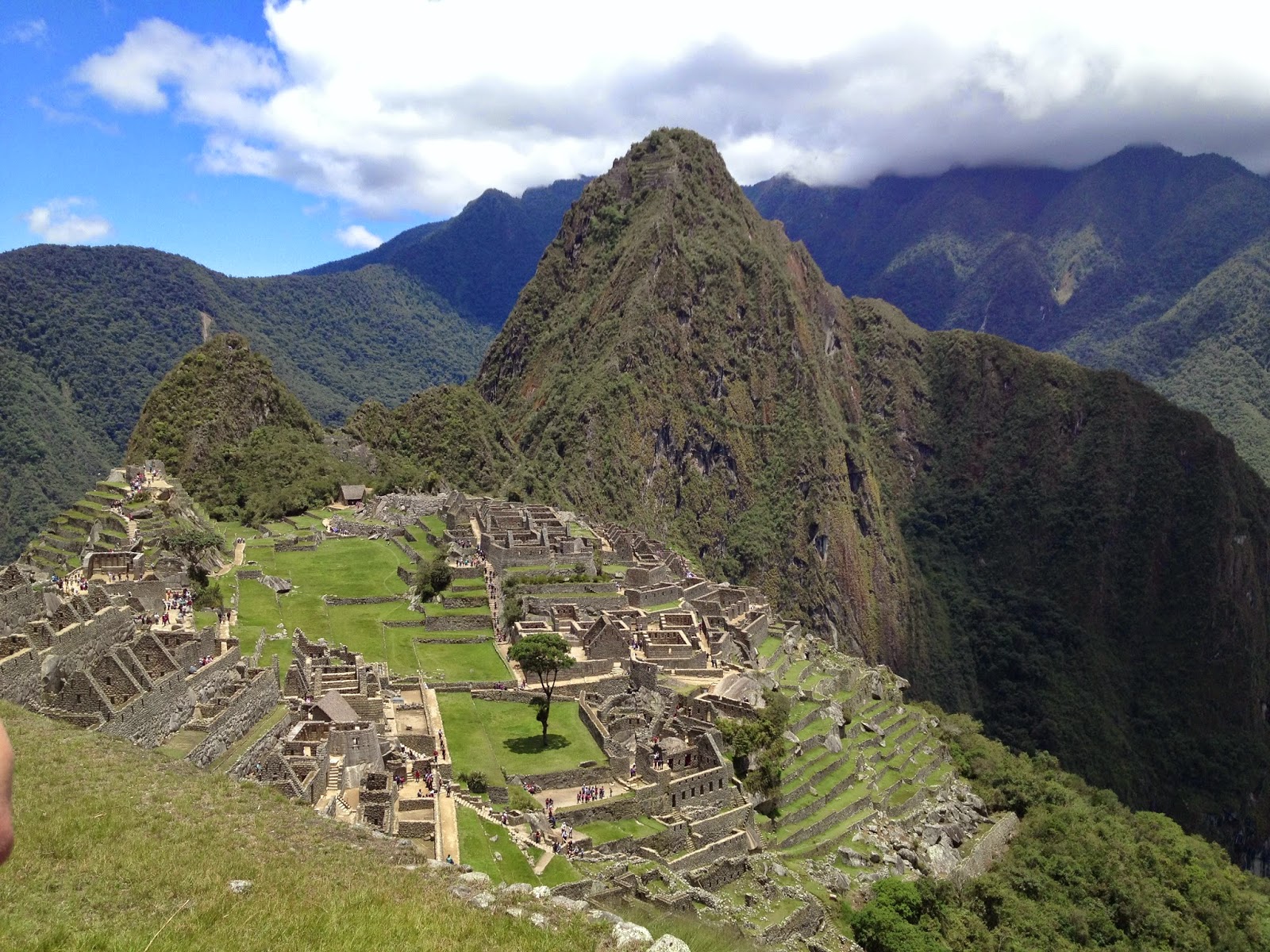
The first thing you try to comprehend is why the engineers of Machu Picchu chose this location, so removed from anywhere else, and seemingly so protected on its perch in the mountains. (At its highest point, Machu Picchu's La Ciudadela sits more than 8000 feet above sea level.) Was there a mystical reason why the Incans chose the meeting point between the Peruvian Andes and the Amazon Basin? Were the risks so great that they needed to keep themselves well hidden, without accessibility to roads, water and other creature comforts? Or was Machu Picchu simply one of the many estates built at that time to escape the colder climes of higher-altitude Cusco?
 |
| Machu Picchu |
As I walked among the temples and homes, and imagined the llamas and other animals that had lived with the residents, I marveled at the range of people climbing the broken and steep steps, from young children clinging to parents to seniors walking with canes, all from a multitude of countries. There was electricity in the air that seemed borne out by the compass that spun in only one direction. Another mystical omen? People swear by the special energy you can feel here. Touch the Sacred Rock and they say the energy will stay with you.
I could have spent three more days in Machu Picchu, easily, sitting and speculating about the type of life that had existed there. The Incans had all been killed off. The civilization had vanished with no one to inherit the treasures of this community, and only a moderate understanding of why. In some ways, the mysteries of Machu Picchu were like the secrets of Rapa Nui, except that we know far more about the civilization of the Incas and their ways of life. Would I go back? Absolutely. But next time I want to bring my hiking boots.
A few practical notes: a valid passport is required for entry into Peru. It is wise to obtain altitude sickness medication in advance to prevent headaches and other maladies. Flat shoes or sneakers are a must, as the hills, especially in Cusco, can be daunting. Be sure to turn off roaming on your cellular phone and use WiFi whenever possible – charges are especially high in the hills. For more information, contact the Trade Commission of Peru, 310-496-7411, http://www.peru.travel/en-us/.
 |
| JetBlue |
l


















